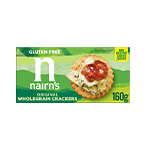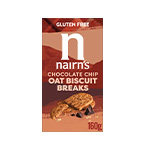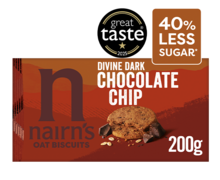
It’s no surprise that oatcakes are made from oats but you might not know how oats grow in the first place? Or what our miller’s do to turn the raw crop from the farmer’s field into a wholesome ingredient we can use in our range of recipes. So where do oats come from?
What plants do oats come from?
Oats (Avena Sativa) grow in fields like wheat and barley year round. Crops sown in spring and harvested in August are called ‘spring oats’. Crops sown in September and harvested in spring are called ‘winter oats’. They are easy to spot when you know to look for their tell-tale husks dangling off the main stalk, or the oat flowers which are a familiar sight all year round in Scotland. The groat or oat is inside, protected by the husk.
Growing oats
Oats love cool summer temperatures and plentiful rain to ripen slowly and plump up, so it’s no surprise that the Scottish climate is perfect! Farmers have been growing oats in the Scottish Borders for centuries, and it’s here that Nairn’s source the majority of our oats from farms with generations of expertise that shows in the quality of the crop they produce.
A creamier and nuttier taste
Our trusted relationship with John Hogarth’s began in 1978– their mill in Kelso is situated on the picturesque banks of the River Tweedand they’ve been milling for over a hundred years. Even today, some of the mill’s local customers still pop in for their sack of porridge oats!
Hogarth’s mill their oats the traditional way. The oats are kiln-roasted with their husks on. This allows the miller’s to roast at a higher temperature before they are steamed to impart a wonderful creamy and nutty taste you can’t achieve the modern way, stripping the husk off the groat first.
Once kiln roasted, the husks are then removed and the oats are gently rubbed together to smooth the surface. The oats are then flattened, chopped and milled into different texturesthat you can read about here.
Oats that are too small or not good enough to make it into a Nairn’s product are put to good use, going back to farmers for use as Winter feed for the animals. Nothing is wasted.
Why is it called a wholegrain?
The husk is really just the groat or oat’s coat or jacket. Once removed all the fibre and goodness remainsunlike heavily processed flours where the bran and the germ are removed.
Using oats in recipes
The combination of the creaminess and nuttiness of our oat ingredients and Nairn’s time-honoured mixing methods means the texture and taste of the traditional Scottish oatcake is preserved in our recipes.
Did you know that traces of oat porridge have been found amongst the remains of our ancestors from over 5000 years ago? We think its testament to how truly tasty a good helping of oats can be– we stay true to our roots but we love experimenting with different additional ingredients - from cheese to chia - to move with the times and keep oats and oatcakes an enjoyable healthy snack today.
So there you have it; from the simple oat plant growing in the fields to the crisp and delicious oatcake fresh from the oven, the mystery of where oats come from (and how we turn them into wholesome tastysnacks) has hopefully been solved. If you’re still curious, why not check out our infographic on Scottish Oats from Field to Plate.





































